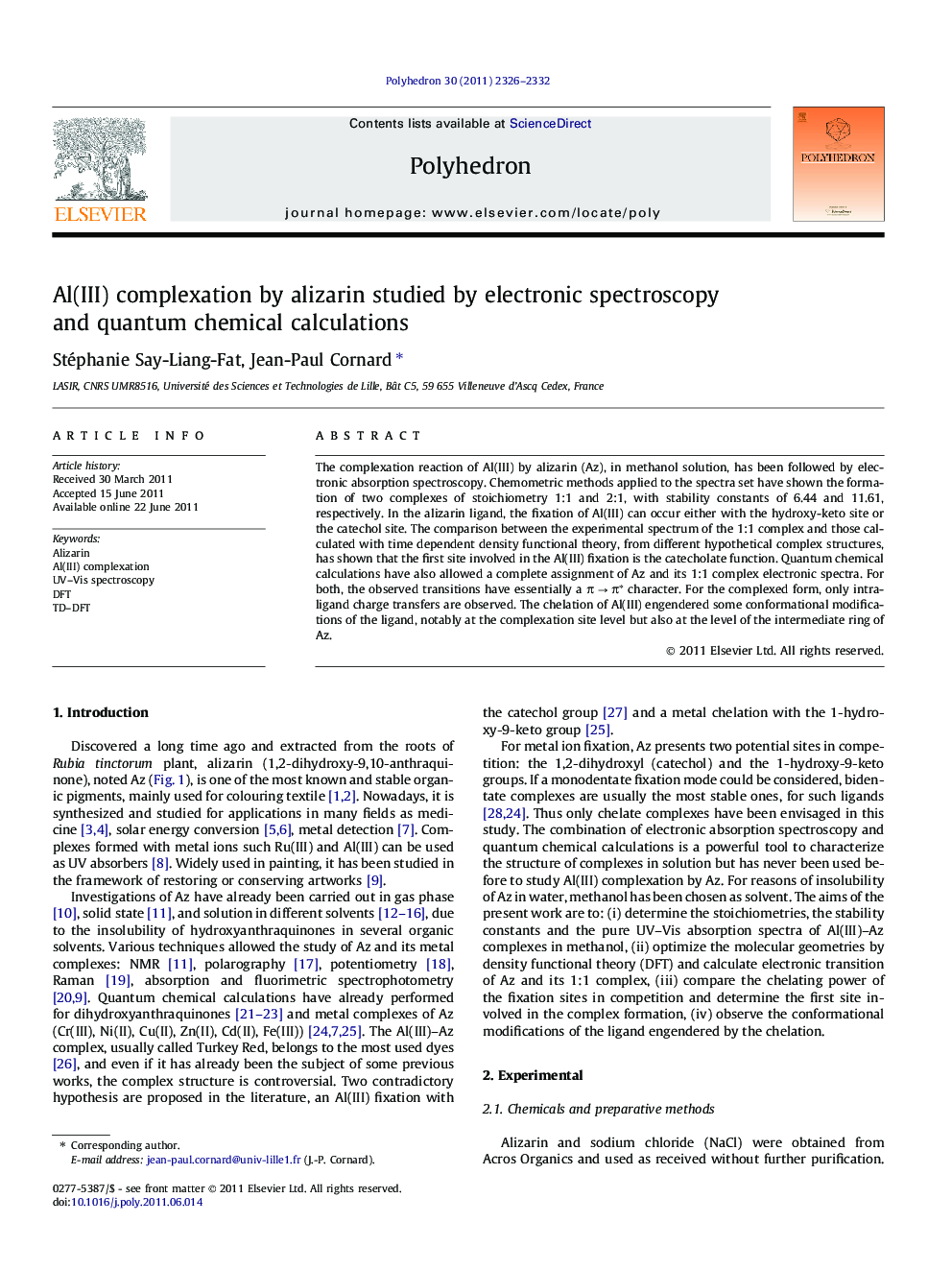| Article ID | Journal | Published Year | Pages | File Type |
|---|---|---|---|---|
| 1337892 | Polyhedron | 2011 | 7 Pages |
The complexation reaction of Al(III) by alizarin (Az), in methanol solution, has been followed by electronic absorption spectroscopy. Chemometric methods applied to the spectra set have shown the formation of two complexes of stoichiometry 1:1 and 2:1, with stability constants of 6.44 and 11.61, respectively. In the alizarin ligand, the fixation of Al(III) can occur either with the hydroxy-keto site or the catechol site. The comparison between the experimental spectrum of the 1:1 complex and those calculated with time dependent density functional theory, from different hypothetical complex structures, has shown that the first site involved in the Al(III) fixation is the catecholate function. Quantum chemical calculations have also allowed a complete assignment of Az and its 1:1 complex electronic spectra. For both, the observed transitions have essentially a π → π∗ character. For the complexed form, only intra-ligand charge transfers are observed. The chelation of Al(III) engendered some conformational modifications of the ligand, notably at the complexation site level but also at the level of the intermediate ring of Az.
Graphical abstractAlizarin is a multisite ligand having a high affinity for metal cations. This study shows that the preferential site of Al(III) fixation is the fully deprotonated catechol function.Figure optionsDownload full-size imageDownload as PowerPoint slideHighlights► Al(III) with alizarin form two complexes of 1:1 and 2:1 stoichiometries. ► The structure of the 1:1 complex was elucidated by UV–Vis spectroscopy and TD–DFT calculations. ► Al(III) forms a chelate with the fully deprotonated catechol group of alizarin.
